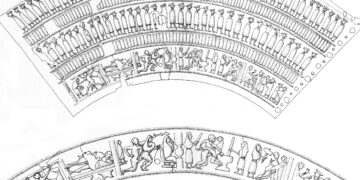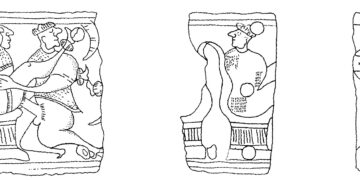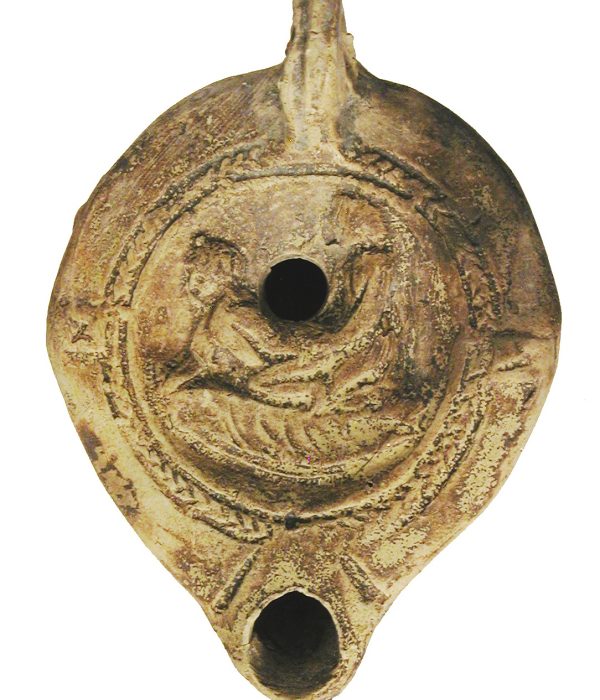Non-mythological erotic scenes appear frequently on a variety of Roman objects intended for daily use. These images portray a range of settings, couples, and positions with a casualness that is foreign to modern viewers. Both elite and non-elite Roman spectators were, therefore, accustomed to encountering such explicit sexual scenes on every day, domestic objects. Erotic lamps were particularly popular and enjoyed a long life span in Roman culture. Extant examples date from the 2nd century BC to the 5th century CE. We can deduce that, when purchasing an oil lamp, a large number of customers chose representations of sexual scenes over other available motifs such as mythological representations, images of animals, and abstract floral designs. For the Romans, erotic images evoked notions of pleasure rather than sin, guilt, or shame. The sexual act represented in these images was, above all seen as a gift from Venus.
The decoration shows a man and a woman engaged in sexual intercourse. When this lamp was lit, the flame’s flickering light would have animated the figures on the bed. Moreover, the placement of the hole for the wick, just below the bed, is in itself a visual pun. The couple depicted on this lamp is, quite literally, on fire. By choosing to depict this erotic scene from a bird’s eye view, the artist placed added emphasis on the texture of the fabrics on the bed, whose creases communicated their softness. Such idealized images of sex were then associated with notions of luxury, pleasure, and elite status. The erotic scene on this lamp fragment can, therefore, be seen as representative of Roman attitudes towards sexuality.






































